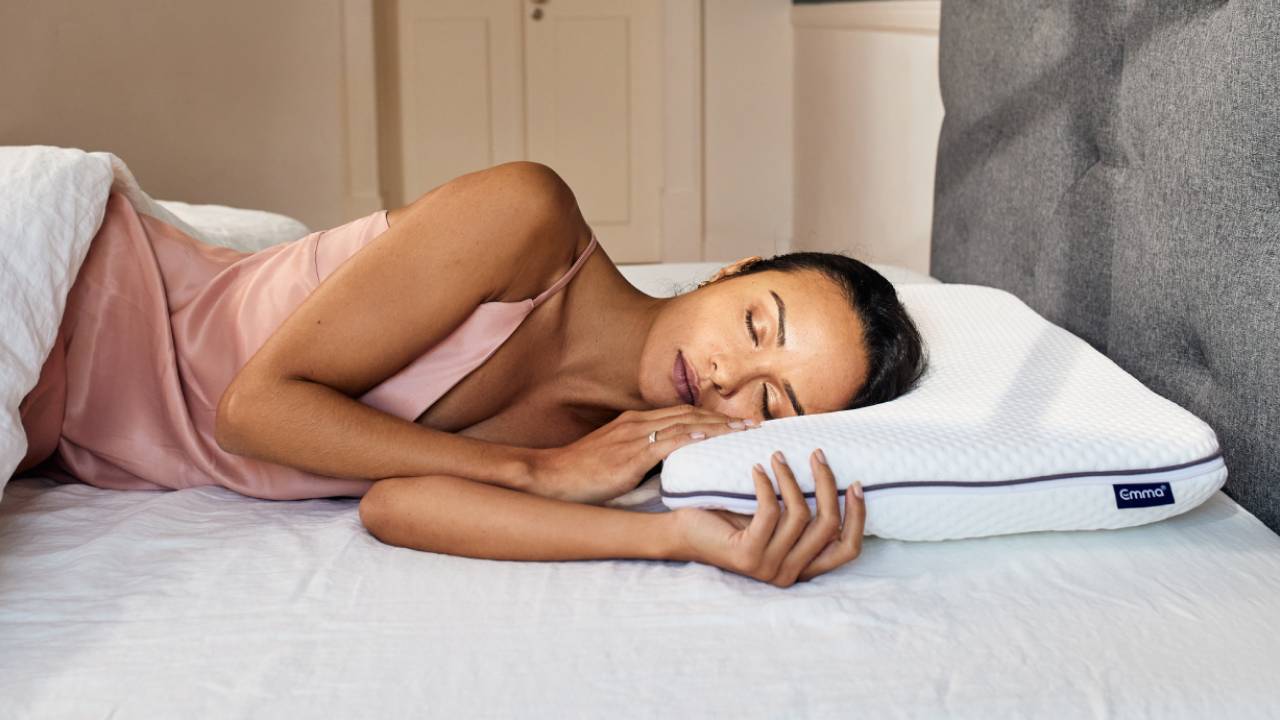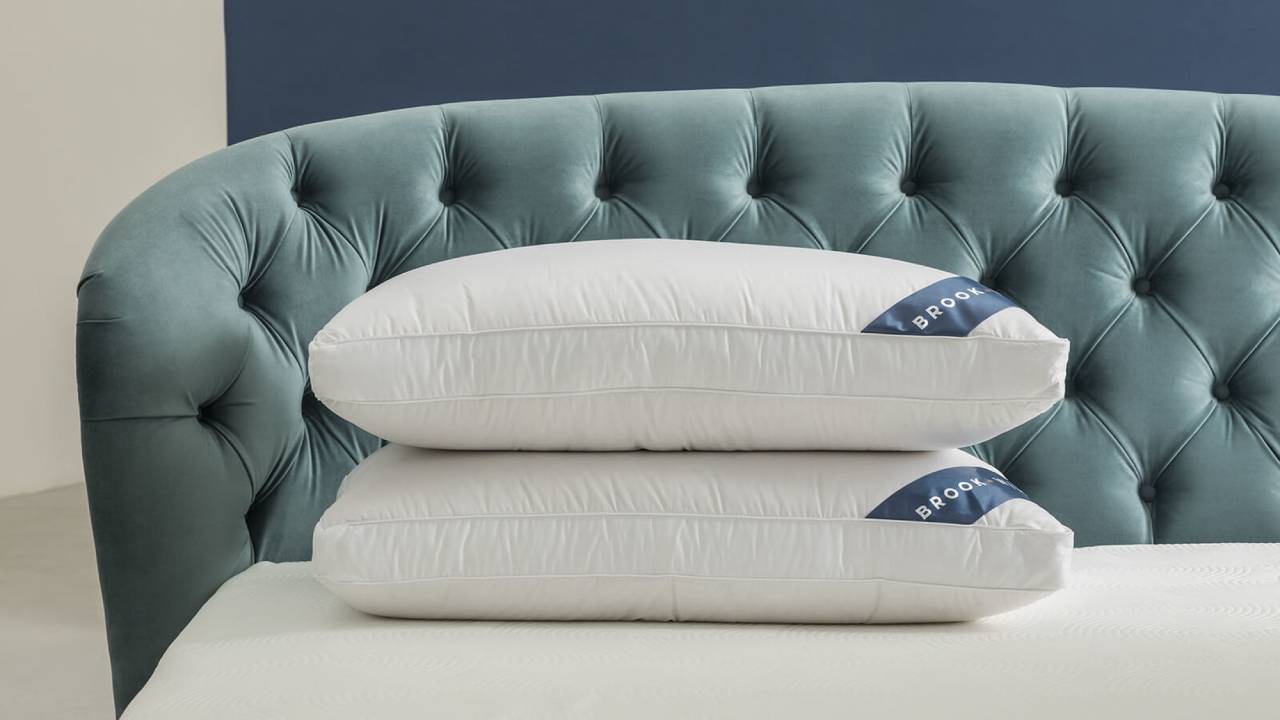Pillow size guide 2025: how to pick the right pillow for support and comfort
Find the perfect pillow with T3’s pillow size guide, including firmness, height and material


As we spend a third of our lives in bed, it’s important that your bed set-up is comfortable, supportive and meets your specific needs. While we tend to spend lots of time and money finding the best mattress and the best duvet, pillows aren’t always given the same thought and consideration.
Finding the best pillows for your style, preferences and budget should be at the top of your list. After all, pillows support your head and neck while helping keep your spine aligned, so to avoid unnecessary pains and aches, having the right pillow is something you don’t want to leave to chance.
In this guide, I’ll take you through everything you need to know about pillows, including UK, US and EU sizes, material options and firmness levels. For more bedding buying guides, find out how to choose the right mattress in our mattress size guide and get the right size and tog with our duvet size guide.
How to choose the right pillow size
When buying a new pillow, it’s important to keep in mind what size you need, firmness levels and what sleeping position you favour.
Size will determine how much room the pillow will take up on your mattress and how much space your head and neck get when on the pillow. While this might seem a silly thing to think about, you don’t want your pillow to overlap your partners or risk it slipping off the bed if it’s too small. Choosing a size that fits your bed and gives your head and neck enough room to move from side to side can set you up for success.

Below, I’ve listed the standard pillow sizes you’ll find on the market, and separated them into UK, US and EU sizes, and centimeter and inch measurements. When buying a new pillow, keep in mind that sizes will differ from brand to brand, for example, Scooms and Soak&Sleep have different sizes for toddler pillows, but the measurements below are generally agreed upon.
UK pillow sizes
- Standard: 50cm x 75 cm / 20in x 30in
- King / Super King: 50cm x 90cm / 20in x 36in
- Small Square: 40cm x 40cm / 16in x 16in
- Medium Square: 50cm x 50cm / 20in x 20in
- Large Square: 65cm x 65cm / 26in x 26in
- Junior / Toddler: 40cm x 60cm / 16in x 24in
US pillow sizes
- Standard: 51cm x 66cm / 20in x 26in
- Super Standard: 51cm x 71cm / 20in x 28in
- Queen: 51cm x 76cm / 20in / 30in
- King: 51cm x 92cm / 20in x 36in
EU pillow sizes
- Standard: 65cm x 65cm / 26in x 26in
- Continental: 80cm x 80cm / 31in x 31in

How to choose pillow material
There are many different pillow materials to choose from, which will determine how comfortable you are and how supportive and firm your pillow is. T3 has gone into more detail about choosing your pillow filling in our down vs memory foam vs feather vs synthetic pillow guide, but I’ll quickly explain the different types and benefits of each below.
Get all the latest news, reviews, deals and buying guides on gorgeous tech, home and active products from the T3 experts
Down pillows are made from goose or duck feathers, which are found underneath the tougher, exterior feathers of the bird. This gives the pillow a soft cloud-like feel with its cluster make-up and can be longer lasting than synthetic pillows, although they will be more expensive. They can trap heat at times and if you’re vegan, you might not want to choose a down pillow due to its use of animal products.
Feather pillows are similar to down ones but the feathers in the pillow are typically quills. They’re less expensive than down and keep you cool, but they will be quite flat. If you like down but don’t want to use animal fabrics or you’re allergic to feathers, synthetic pillows are a great alternative with polyester stuffing and are cheap but not particularly long lasting compared to others.
Memory foam pillows are rising up the ranks in popularity and are similar in makeup to the best memory foam mattresses. They offer specific and constant support that moulds to your head and neck, plus they’re more durable. Memory foam pillows tend to be on the firmer side but if you want something similar but softer, latex pillows are squishy and bounce back quickly. Latex is incredibly durable and is a sustainable option as natural latex comes from rubber trees.

How to choose pillow firmness
Pillow firmness levels include soft, medium and hard. If you’re not sure what firmness level or height you want your pillow to be, consider your sleeping position.
If you’re a side sleeper, choose a pillow that’s medium to medium-firm (memory foam is a popular option) and one that keeps your ears aligned with your shoulders to prevent straining, says Good Housekeeping. See 5 tips for side sleepers for more advice.
For back sleepers, your pillow should have a medium firmness but what you really want to focus on is the height or loft. As your whole body is aligned when you’re on your back, a too high or too low pillow can affect your posture and compress your spine, says experts at Levitex. A thickness of 3-5 inches is a good choice here – check out our guide to how to sleep on your back for more.
If you’re a front sleeper, you should choose a thin pillow or no pillow at all! This is because you’re lying completely flat on your stomach, so a pillow too thick or high will put your neck at a strange angle. We go into more detail on this in our tips for front sleepers guide.
Pillow FAQs
How often should I replace my pillow?
General rule of thumb is to replace your pillow every 2-3 years. See how often should you replace your pillow for specific advice on memory foam, down and synthetic pillows. Regardless of how long you’ve had your pillow, if it’s showing any of these 7 signs, you should replace it pretty soon.
How do I clean my pillow?
When it comes to cleaning a pillow, you should be looking to wash your pillowcases every 1-2 weeks. Depending on your pillow material, you can either hand wash it or put it in the washing machine – always make sure to check your pillows’ label!
What material should my pillowcase be?
There are many pillowcase materials to choose from, including cotton, silk and polyester. All have their benefits and there are now more sustainable and eco-friendly options on the market, so whether you buy your pillowcases alongside the best sheets, make sure it fits your pillow properly and is kind to your skin.

Beth is Home Editor for T3, looking after style, living and wellness. From the comfiest mattresses to strange things you can cook in an air fryer, Beth covers sleep, smart home, coffee machines, watches, grooming tools, fragrances, gardening and more.
In her spare time, Beth enjoys running, reading, baking and attempting craft projects that will probably end in disaster!